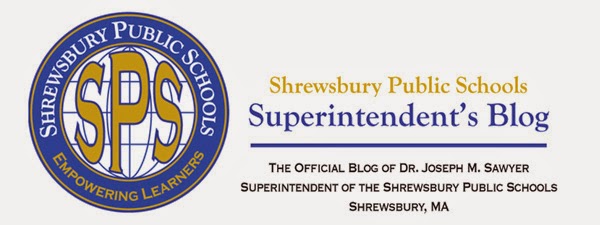As I’m sure as you have, I’ve been thinking a great deal recently about how community life has been evolving in the United States, and I think it’s clear that we as a country are experiencing a time where there is a great deal of anger, divisiveness, mistrust, and coarseness. I am not a sociologist, nor an economist, nor a political scientist, but as an educator I am very concerned about our current state of affairs nationally, and what this ultimately means for our town of Shrewsbury.
Last spring, I had the opportunity to hear Robert Putnam, the Harvard sociologist and author who has done extensive studies of American society and who, in his recent book Our Kids: The American Dream in Crisis, makes the case that the sharply growing gap between the wellbeing of children from wealthy families vs. poor families is, and will be, the most important issue facing our country now and in the coming decades. His argument lays out the stark differences created by increased segregation of social classes in America, from where people live, to the quality of education, to whether parents are married. He illustrates how family and social bonds are fraying within the lower socioeconomic classes, and how children from lower income families are living not just in a marginally different environment, but essentially in a different universe than their more affluent peers. The contrast he draws from his own upbringing in a small Ohio town in the 1950s, compared to what currently exists in that community, is stark, and he concludes that a significant cultural change has occurred. He says that when he grew up, in his town the phrase “our kids” referred to the entire community’s children. He suggests that now “our kids” is more likely to mean “my own kids and my friends’ kids,” and that many Americans have a narrower and more selfish perspective when it comes to the wellbeing of the next generation.
While Putnam’s view of a more equitable playing field in the past may be a bit narrow, as opportunities were certainly different than they are today if you were female or a minority back in the 1950s, I think his larger point is on target relative to the extreme differences between social classes in today’s America, and how this is affecting children’s chances at upward mobility during their lifetime. Interestingly, despite his findings, Putnam is an optimist who sees parallels between where we are now and where we were as a country in the late 19th and early 20th centuries, where many of the problems of the so-called Gilded Age are present today: the greatest gap between rich and poor (until now); very high rates of immigration; and significant political alienation. Putnam asserts that these issues were addressed effectively by what he calls the greatest public policy decision in the history of our country: the implementation and widespread adoption of the American public high school. This investment, which was significant at the time, raised productivity so much that Putnam says it was responsible for a huge amount of the economic growth in the 20th century; it helped level the playing field between social classes; and it was an engine of upward mobility that was a manifestation of local communities providing opportunities for their youth, regardless of their socioeconomic background. He also reminded those of us in the audience that this was a bottom-up solution that played out in local communities, not a national mandate from Washington D.C. Providing educational opportunity to all the community’s young people through access to public education turned out to be an excellent investment with long-lasting positive effects.
Public education is what made the American dream achievable for millions, including my parents, my siblings, and me. Now, in 2016, the expectations for what a public education should provide to students have multiplied and become more complex, and the world our students will enter after they graduate is not only complex but changing rapidly. Our school district is working very hard to figure out how to best prepare our students to be successful in the future, and I am optimistic that we will find ways to equip them with the skills and knowledge they will need to succeed. Ultimately, it will take the entire community to support and sustain this effort, in the spirit of providing all of “our kids” the opportunity to achieve their American dreams.
